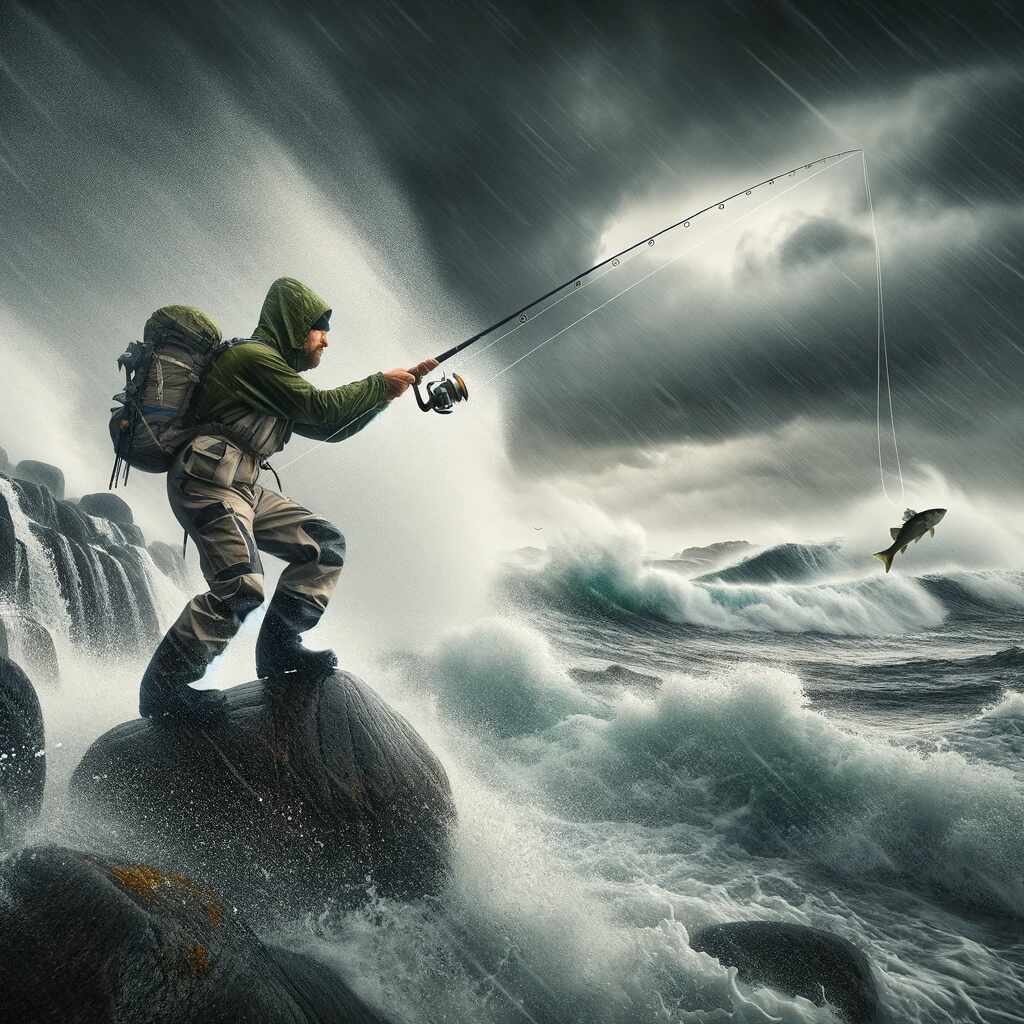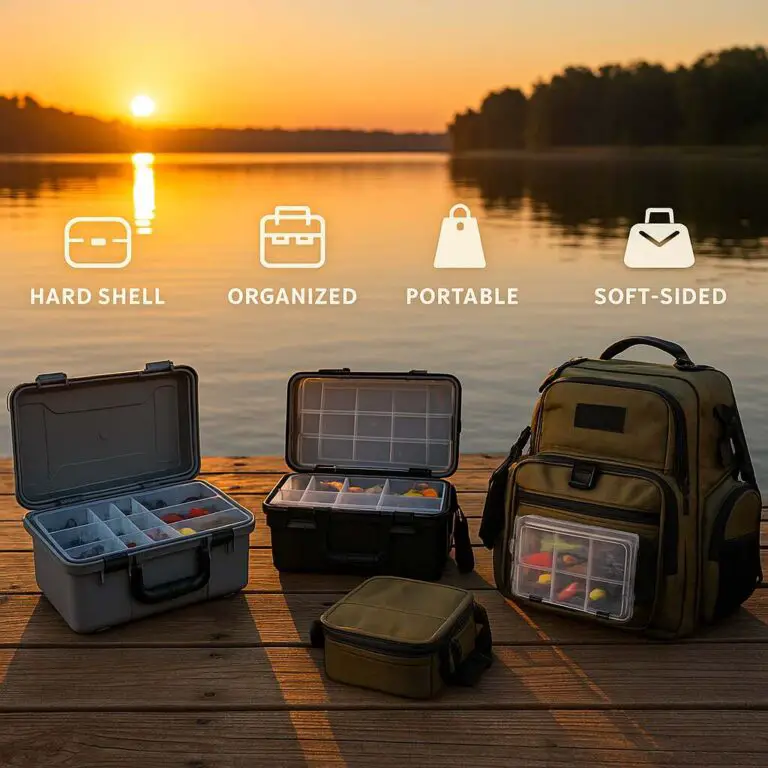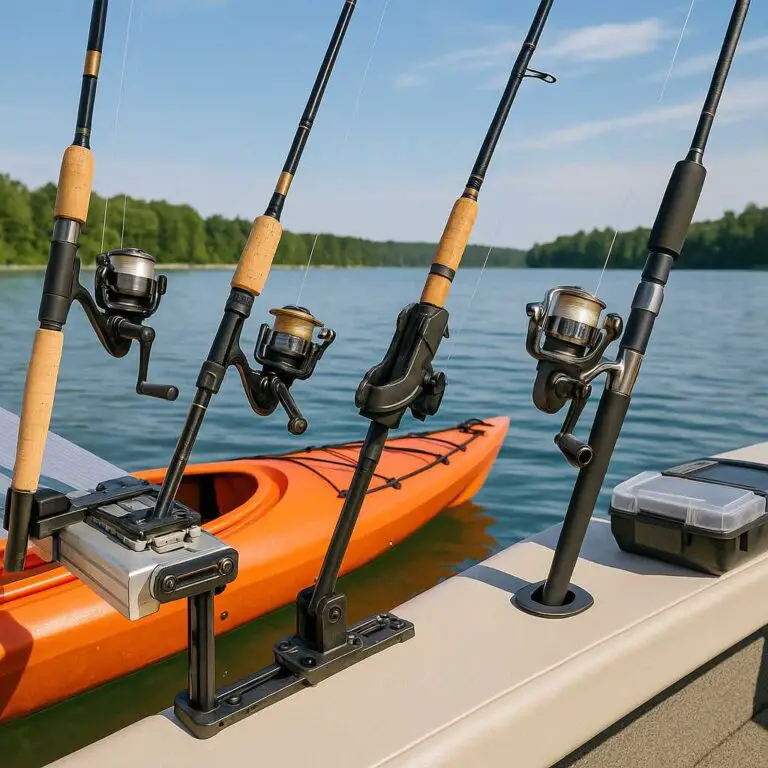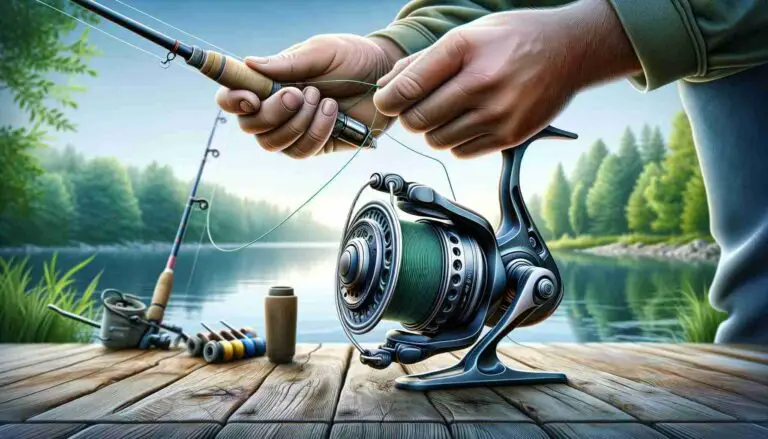Fishing enthusiasts are known for their unwavering dedication to their craft, often braving extreme weather conditions in pursuit of their prized catch. While fishing in calm, sunny weather is undeniably pleasant, it’s the challenges posed by extreme conditions that truly test an angler’s mettle. Whether you find yourself facing sweltering heat, bone-chilling cold, raging storms, or intense winds, the art of fishing remains an exciting adventure that requires both skill and adaptability. Let’s explore the best practices for fishing in extreme weather conditions in this comprehensive guide.
1. Research and Preparation
Know the Weather Forecast
The first step in planning an extreme weather fishing trip is to stay informed about the weather conditions. Check the local weather forecast regularly leading up to your trip and pay attention to any warnings or advisories issued by relevant authorities. Many weather apps and websites offer detailed information about temperature, wind speed, precipitation, and more. Understanding the weather patterns specific to your fishing location is crucial for a safe and successful outing.
Plan Your Timing
Extreme weather conditions often have periods of relative calm or stability. Consider scheduling your fishing trip during these windows of opportunity. For example, during hot summer days, fish tend to be more active during the early morning and late afternoon when temperatures are milder. In contrast, winter fishing may be more productive during the warmer parts of the day when fish are more likely to be active.
Dress for Success
Your choice of clothing can make or break an extreme weather fishing trip. Layer your clothing to provide insulation against cold weather or to allow for easy removal in case of rising temperatures. Wear moisture-wicking, breathable fabrics to stay dry in the rain or when sweating. Don’t forget to protect your extremities with waterproof gloves and insulated boots, and always pack extra clothing in case of unexpected weather changes.
2. Hot Weather Fishing
Beat the Heat
Fishing in scorching heat can be challenging, but it can also be rewarding if you plan accordingly. Here are some tips for hot weather fishing:
- Fish in the Morning or Evening: The early morning and late evening hours are often cooler, and fish tend to be more active during these times. Avoid the midday sun when temperatures peak.
- Stay Hydrated: Bring plenty of water to stay hydrated throughout the day. Dehydration can be a real threat in hot weather.
- Use Sun Protection: Wear a wide-brimmed hat, sunglasses, and sunscreen to protect yourself from the sun’s harmful rays. Heat exhaustion and sunburn can ruin your fishing trip.
- Fish Shaded Areas: Look for spots with natural shade, such as under trees, bridges, or docks. Fish often seek refuge in these areas during hot weather.
Choose the Right Bait and Lures
Hot weather can affect fish behavior, making them more selective about their food. Opt for baits and lures that mimic the natural prey in the area you’re fishing. Additionally, consider using scented baits to attract fish that may be less active due to the heat.
Fish Deeper
During hot weather, fish tend to move to deeper, cooler waters to escape the heat. Adjust your fishing techniques by using sinking lures or fishing deeper with live bait to reach your target species.
3. Cold Weather Fishing
Embrace the Layers
Fishing in cold weather requires meticulous preparation. Here’s how to handle it:
- Layer Up: Wear multiple layers of clothing to trap body heat. Start with a moisture-wicking base layer, add insulating layers for warmth, and finish with a waterproof and windproof outer layer.
- Invest in Quality Gear: Cold weather fishing calls for specialized gear, such as thermal gloves, insulated boots, and an ice fishing suit if you plan to fish on frozen lakes.
- Keep Warm Drinks and Snacks: Hot beverages and high-energy snacks like nuts or granola bars can help keep your body temperature up.
Slow Down Your Retrieval
Coldwater fish, such as trout and pike, are less active in winter. Slow down your retrieval speed to match their lethargic behavior. Consider using jigs, soft plastics, or live bait to entice bites from these cold-water species.
Ice Fishing Safety
If you’re venturing out onto frozen waters for ice fishing, safety should be your top priority. Follow these ice fishing safety guidelines:
- Check Ice Thickness: Ensure that the ice is thick enough to support your weight. A minimum thickness of 4 inches is typically recommended for safe ice fishing.
- Carry Safety Gear: Always carry safety gear, including ice picks, a life jacket, and a rope. These items can be lifesavers if you fall through the ice.
- Fish with a Buddy: Ice fishing is safer when done with a partner. If an accident occurs, having someone nearby can make all the difference.
4. Fishing in Rain and Stormy Weather
Rainy Day Strategy
Fishing in the rain can be productive, as it often triggers feeding activity in fish. However, you need to be prepared for wet conditions:
- Stay Dry: Invest in quality rain gear, including a waterproof jacket and pants. Keep your gear and tackle dry in waterproof bags or containers.
- Change Your Approach: Fish may move closer to the surface during rain, so adjust your bait or lure selection accordingly. Brightly colored lures can be more visible in murky water.
- Mind Lightning: If thunderstorms are in the forecast, consider postponing your trip. Lightning is a serious safety hazard when fishing.
Storm Safety
Fishing during a storm is not recommended due to the increased risk of lightning, strong winds, and rough waters. It’s best to seek shelter and wait for the storm to pass. Always prioritize safety over your catch.
5. Windy Weather Fishing
Harness the Wind
Fishing in windy conditions can be both frustrating and rewarding. To make the most of it, follow these tips:
- Use the Wind: Position yourself so the wind is at your back or coming from the side. This can help you cast your line farther and improve your chances of reaching fish.
- Heavier Gear: Opt for heavier lures or bait rigs to counter the wind’s effect on your line.
- Downsize Your Lures: In extremely windy conditions, consider downsizing your lures or switching to techniques like fly fishing, which are less affected by the wind.
Safety First
Strong winds can create dangerous situations, especially if you’re fishing from a small boat or kayak. Always wear a life jacket when fishing in windy conditions and be cautious when navigating choppy waters.
6. High-Altitude Fishing
Fishing at high altitudes presents its own set of challenges, such as thinner air and rapidly changing weather. Here are some tips for success:
- Acclimate Slowly: If you’re not used to high altitudes, give your body time to adjust before engaging in strenuous activities like hiking to mountain lakes.
- Stay Hydrated: High-altitude fishing can lead to increased dehydration due to the dry air. Drink plenty of water to stay hydrated.
- Watch for Altitude Sickness: Be aware of the symptoms of altitude sickness, including nausea, headache, and dizziness. Descend to lower elevations if you experience severe symptoms.
- Check Local Regulations: Some high-altitude fishing locations may have specific regulations, so check with local authorities or fishing guides for guidance.
7. Safety Tips for Extreme Weather Fishing
Regardless of the weather conditions you encounter, safety should always be your top priority. Here are some general safety tips to keep in mind:
- Tell Someone Your Plans: Before heading out, inform a friend or family member of your fishing location and expected return time.
- Carry Essential Safety Gear: In addition to the specific gear mentioned for each weather condition, always have basic safety gear, including a first-aid kit, multi-tool, flashlight, and a fully charged cell phone.
- Respect Mother Nature: If conditions become too extreme or dangerous, don’t hesitate to cut your fishing trip short and seek shelter. Your safety is more important than any catch.
- Stay Informed: Listen to weather updates while you’re out fishing to stay aware of any sudden changes in conditions.
- Learn CPR and Basic First Aid: Knowing how to perform CPR and basic first aid can be invaluable in emergencies.
8. Leave No Trace
Whether you’re fishing in extreme weather conditions or enjoying a pleasant day on the water, it’s essential to leave no trace of your presence. Always follow these Leave No Trace principles:
- Dispose of Waste Properly: Pack out all trash, including fishing line, bait containers, and food wrappers. Dispose of waste in designated trash receptacles.
- Respect Wildlife: Keep a safe distance from wildlife and avoid disturbing their habitats.
- Stay on Designated Paths and Trails: Minimize your impact on the environment by staying on established paths and trails.
- Minimize Noise: Keep noise levels to a minimum to avoid disturbing other anglers and the natural environment.
Conclusion
Fishing in extreme weather conditions can be both challenging and rewarding. By following the best practices outlined in this guide, you can increase your chances of a successful fishing trip while staying safe and comfortable.
Remember that preparation, adaptability, and a deep respect for nature are key to mastering the art of extreme weather fishing. So, gear up, check the weather forecast, and embrace the adventure that awaits you in rain, shine, wind, or snow. Happy fishing!








